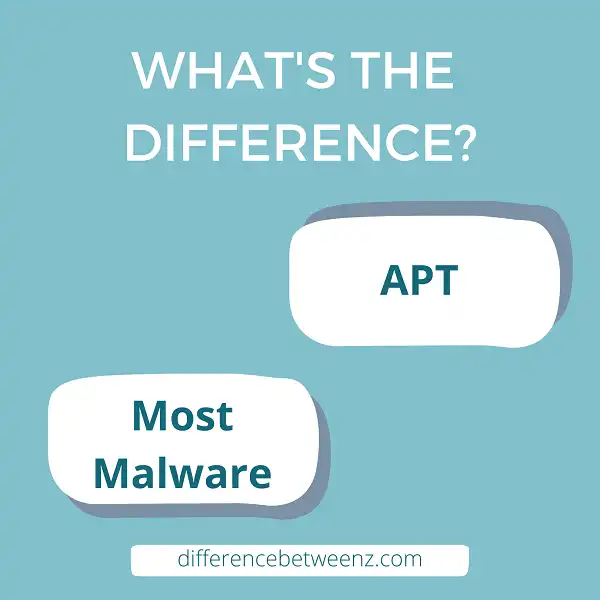Cybersecurity is a field that is constantly evolving. As new threats are discovered, new defenses are developed. In recent years, there has been a lot of discussion about the difference between APT (Advanced Persistent Threats) and most malware. Some people claim that APT is just a more sophisticated type of malware, while others argue that there is a significant difference between the two.
What is APT?
Advanced Persistent Threat, or APT, is a type of cyber attack in which an intruder gains access to a network and then remains there undetected for a long period of time. Unlike other types of attacks, which are often designed to cause damage or steal data, APT attacks are typically motivated by espionage. The attacker’s goal is to gain information about the target organization, rather than to cause damage or disrupt operations. In order to achieve this goal, APTs typically use sophisticated methods to gain initial access to the target network and then move laterally to compromise additional systems. Once they have gained a foothold on the network, APT attackers will often use custom-developed tools and techniques to maintain their presence and avoid detection. Advanced Persistent Threats are a serious concern for organizations of all sizes, and it is important to be aware of the risks they pose.
What is Most Malware?
Most malware is created for the purpose of stealing people’s money. Hackers will create malicious software that can either infect a person’s computer or allow them to take control of it remotely. Once they have access, they can then steal financial information such as credit card numbers or login credentials for online banking accounts. In some cases, they may even demand ransom payments in exchange for restoring access to the computer. While there are many different types of malware, the vast majority is created with financial gain as the primary objective.
Difference between APT and Most Malware
While both APT and most malware are designed to maliciously gain access to a computer system, there are some key differences between the two. APT, or Advanced Persistent Threat, is a type of cyber attack that is characterized by its sophisticated nature and its ability to stealthily remain on a system for an extended period of time.
In contrast, most malware is not as sophisticated and is typically only able to remain on a system for a short amount of time before it is detected and removed. Another key difference is that APT is often used to target specific organizations or individuals, while most malware is designed to infect as many systems as possible in order to generate revenue through things like ransomware or data theft.
Ultimately, both APT and most malware can be extremely harmful to a computer system, but understanding the key differences between the two can help organizations better prepare themselves against these types of attacks.
Conclusion
While APT attacks are often thought of as more sophisticated and targeted, the truth is that most malware infections are caused by opportunistic attackers who take advantage of basic security vulnerabilities. Understanding the difference between APTs and other types of malware can help you better protect your organization from attack. If you’d like to learn more about how to protect your business from cybercrime, contact us today. We offer a variety of services designed to keep your systems safe and secure.


